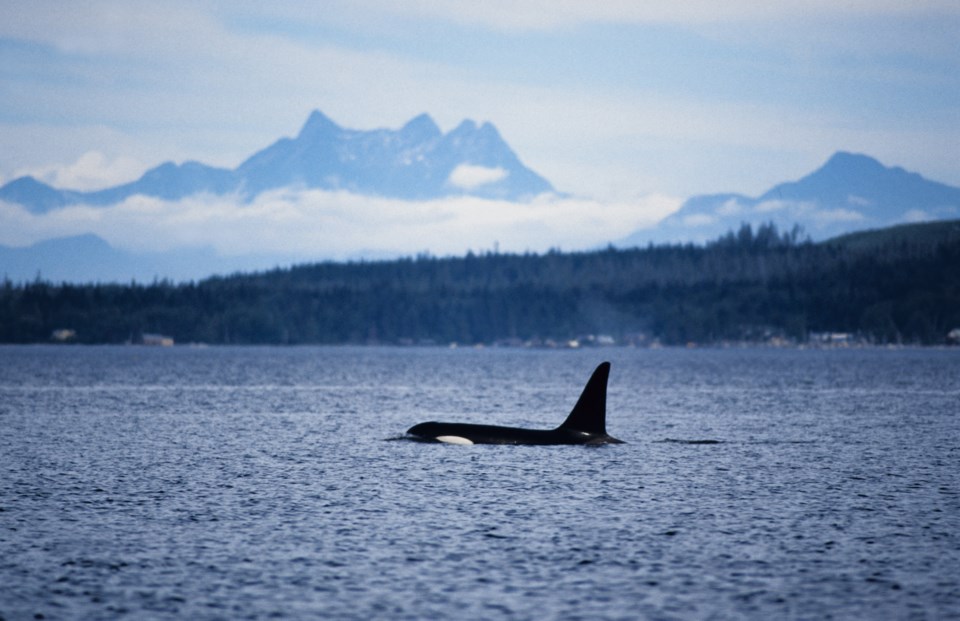The federal government is putting $3.1 million into projects aimed at reducing underwater noise from vessels to protect marine mammals like southern resident killer whales.
These endangered whales use echolocation, and increased tanker traffic brought on by the Trans Mountain pipeline expansion project (TMX) will make it harder for them to hunt, communicate and navigate.
The Quiet Vessel Initiative is one of eight measures developed to address Indigenous communities’ concerns about TMX. Part of a previously announced $26-million investment over five years, the $3.1 million will support 22 projects, including developing real-time tools to track underwater noise from marine vessels, detect marine mammals and alert nearby vessels, among other things.
Announced Aug. 11, these investments in research technology are positive, but tangible results and benchmarks are consistently missing from these types of announcements, Christianne Wilhelmson, executive director of the Georgia Strait Alliance, told Canada’s National Observer.
“There's always a danger here if you spend a lot of money on research … and at the end of the day, nothing changes for southern resident killer whales,” said Wilhelmson.
While Canada is leading conversations on the international stage about reducing marine vessel noise, “if the government is truly committed to the orcas, in particular, they have to stop ignoring panels which tell them that projects will absolutely harm the species,” said Wilhelmson.
She points to the Roberts Bank Terminal 2 project — a proposed shipping terminal in Delta, B.C. — as an example. A review panel determined the project would result in “significant adverse and cumulative effects on wetlands” and wildlife species, including southern resident killer whales. A final decision on its approval is still pending.
“We hope they're not going to approve [it], but this government just has convinced itself it can have these massive developments — which will increase shipping — and protect orcas, and those two things are at cross purposes,” she said.
The new noise-reducing projects announced last week by Transport Canada will explore and test technical solutions that can be used to design quieter vessels and retrofit existing ones, Transport Canada spokesperson Sau Sau Lui told Canada’s National Observer in an emailed statement. This builds on the Whales Initiative, a program designed to “more than mitigate the potential impacts of TMX by taking a regional approach to addressing underwater noise from vessels,” the statement said.
Measures implemented through the Whales Initiative include increasing the distance vessels must maintain from all killer whales from 200 to 400 metres in certain areas, implementing a seasonal slowdown area off Swiftsure Bank near West Vancouver Island, educating recreational boaters on how to protect killer whales, and more.
While these actions are “meaningful in their own ways,” the question of dealing with the cumulative impacts of shipping remains unanswered, said Hussein Alidina, World Wildlife Fund’s lead specialist in marine conservation.
“More than mitigate” suggests the government’s efforts should actually reduce the overall level of noise from human activities in the Salish Sea, but there are no tangible, ecologically meaningful targets to reduce noise levels, said Alidina.
“Where are the targets for noise reduction? What are the plans to what level we're going to reduce, where are the timelines and where are the actions?” he asked. “None of that is articulated right now and it keeps being assessed. But we can't just keep assessing, we've got issues to solve.”
The Department of Fisheries and Oceans previously received $9.2 million over three years to develop and implement an offset program to “demonstrate that the effects of underwater noise and strike risk from [TMX]-related marine shipping have been addressed,” according to a DFO memo from January obtained by Canada’s National Observer through a federal access-to-information request.




